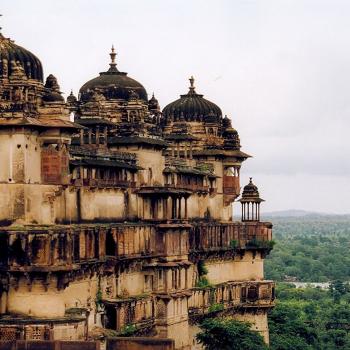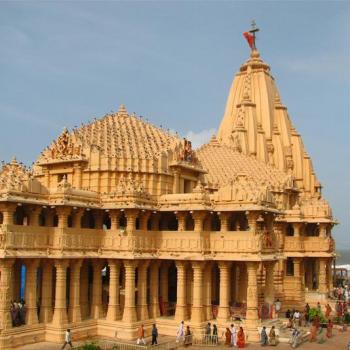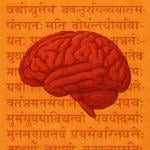Today, on India’s 72nd Independence Day, here are a few amazing facts about India.
1. India’s current population is about 1.31 billion. I’m sure you knew that already. Well, did you know that India’s 2001 population census had a margin of error of 2-3%. That’s about 20-30 million people. In effect, the margin of error in India’s census is more or less the same as the population of Saudi Arabia, and over twice the global Jewish population. 2.5 million census officials visit households in over 7000 towns and 600,000 villages over a period of 11 months. It consumes 11 million tons of paper and costs INR 6000 crores or $1 billion dollars.
2. Speaking of population, three of the ten largest urban agglomerations in the world are in India. (China has only two in the top ten for comparison). Delhi, Mumbai and Kolkata make it to the list, with Delhi being number 2 with 23 million people (as of 2011). Nearly 57 million people live in these three cities alone. If they were a country, they would be the 25th most populous country, just ahead of South Africa.
3. One last population fact, India’s most populous state is Uttar Pradesh, with a population just under 200 million. If it were a country, it would be the sixth most populous nation, just behind Brazil.
4. The Indian Railways is the fourth largest rail network, behind the United States, Russia and China, with 60,000 kilometers of track. Amazingly, it carries 24 million passengers every day! That’s more than the population of Australia. The railways is the largest non-military employer in the world and has 1.4 million people on its rolls, a tad more than the population of Estonia.
5. The People’s Linguistic Survey of India estimates that there are 780 languages confirmed to exist in India, and another 100 that they suspect exist. The government’s official language count is 122 since it does not count languages spoken by fewer than 10,000 people. In the last 50 years, 220 languages have gone extinct, and another 150 might follow the same path over the next 50 years. The survey involved 3000 volunteers and took four years to complete. The 35,000-page document is being released in 50 volumes. What’s the rarest language in India? Probably Chaimal, spoken by four or five members of the Chaimal tribe of Tripura.
6. The Himalayas are the tallest and among the youngest mountain ranges in the world. There are 95 Himalayan peaks that top 7500 meters in altitude. Every one of the 100 highest peaks in the world is in the Himalayas. In fact, the highest peak outside of the Himalayas is Aconcagua in Argentina, at 6960 meters, almost 2000 meters or 2 kilometers lower than Everest. Note that the Himalayas aren’t restricted to India but cover Pakistan, a bit of Afghanistan, China, Burma, Nepal, Bhutan and a sliver of Tajikistan as well.
7.The Kumbh Mela in 2013 was the largest gathering of human beings on earth – ever. 120 million people are estimated to have visited Prayag, the confluence of the rivers Ganga, Yamuna and mythical Saraswati, over 55 days. 30 million people are thought to have been present on February 13th, the most auspicious day.
8. Everyone knows that the longest man-made wall on the planet is the Great Wall of China. But few have heard of the Great Wall of India! The second longest continuous wall built by man, it stretches 36 kilometers around the Kumbalgarh fort in the Mewar region of the Indian state of Rajasthan. Begun in 1443 by the legendary Rana Kumbha. The story goes that Rana failed in his attempts to construct the wall until he was finally advised to sacrifice a human being before beginning his construction. Unwilling to ask anyone to give up their life, Rana wasn’t sure how to go forward, until a soldier volunteered his life. The fort’s massive entrance gate is said to be built where the soldier’s head fell.
The massive wall is 15 feet wide in places, with avenues for guards to walk about and slits for archers to shoot from, at the top. The wall protected the fort during the many wars that raged between Mewar and its neighbor Marwar. The fort has fallen only once in its 500 years of occupancy, when the inhabitants within ran out of water. The wall encloses about 360 temples in the fort, of which 60 are Hindu temples, and the rest Jain ones.
9. The Indian postal network is the largest in the world, with 155,015 post offices, 90% of which are in rural areas. That’s a seven-fold increase on the 23,344 post offices in India at the time of Independence. On average, there is a post office for every 21.21 square kilometers, serving a population of 7175 people. India’s first post office was opened in 1774 by Warren Hastings, but the Indian Postal Service as a system officially came into existence only in 1837. British India also introduced Asia’s first adhesive stamp in 1852, the “Scinde Dawk” or “Sindh Dhak”, meaning the post of Sindh (a region in modern-day Pakistan).
In today’s age of emails and the Internet, the post office has seen a decline of almost 50% over the last decade in deliveries of letters and postcards and a 70% fall in parcels. However, there has been a 20% rise in packet deliveries (containing stuff like ID cards etc.), and a three-fold increase in revenue to INR 10,000 crore ($1.67 billion) thanks mostly to the 500% rise in deposits in the postal services savings account scheme. The postal service currently has about INR 90,000 crore ($15 billion) in deposits as part of its savings scheme. Over the last few months, they’ve been connecting hundreds of post offices to create a banking network of 23,000 branches by 2015. That’s more than the State Bank of India, the current leader that is state-owned. They are also setting up ATMs at 2,800 locations by 2015.
10. India is the only country that is home to five big cat species – the bengal tiger, asiatic lion, indian leopard, snow leopard and clouded leopard. There are about 2500 bengal tigers left in the wild, of which 1700 are found in India. There are 411 asiatic lions in the wild (as of 2010), all of which are confined to the Gir Sanctuary in Gujarat. Though this number may seem dismally low, it is a great improvement over the dozen individuals that survived at the turn of the twentieth century.
The Indian leopard’s wild population is estimated at between 10,000 and 20,000. Due to habitat destruction, they are often found near human settlements, and even in the city of Mumbai! The snow leopard lives in the Himalayas at elevations of over 3000 meters, and as such, only a rough estimate of its population is known. 4000-6000 individuals are thought to live across its range in the Himalayas and parts of Central Asia. Country-wise estimates are not known. The clouded leopard presents a similar problem. Instead of snowbound peaks, the trouble here is tropical jungle. Fewer than 10,000 mature individuals are thought to exist in the wild.
11. 125 species of ants are known to exist in the city of Bangalore alone. Compare that to the 100 or so species found in the whole of Canada and it gives you an idea of Bangalore’s diversity. There is even a species, first discovered in Bangalore, named dilobocondyla bangalorica. Bangalore, which lies amidst the rich green forests of the Western Ghats, is home to wide variety of flora and fauna despite being an IT hub and “Silicon Valley of India.” There are over 670 ant species in India as a whole.
12. Off to the movies now! Bollywood, as India’s Mumbai-based film industry is known, puts out over 1000 films a year (twice as much as Hollywood’s output), making it the globe’s largest film-making industry. Indian movies got their start on May 3, 1913, with the black-and-white, silent flick “Raja Harischandra”. No one called it Bollywood’s first movie back then because the term “Bollywood” came into existence only late in the twentieth century when the West took an interest in Hindi cinema. But movies aren’t as much a craze among Indians as these figures suggest. Only 4% or 45 million Indians go to the theater regularly.














